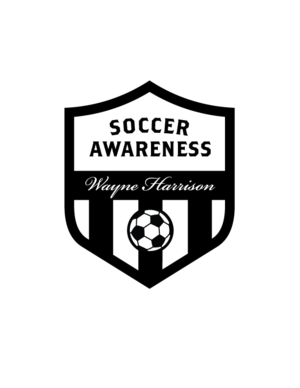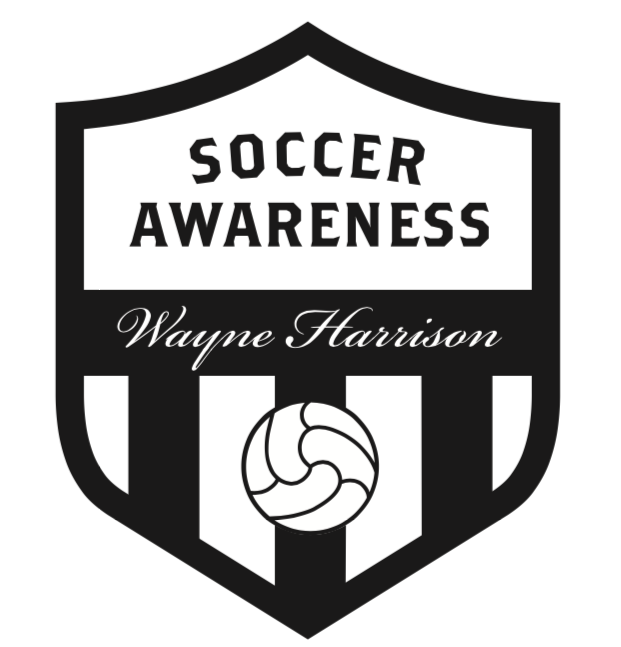Playing in 5 Corridors and 3 Zones Using the 3-3-1-3 for Attacking and Defending Team Shape
/The following is part of a 60 page presentation on the 3-3-1-3 that can be found in the recently added 3-3-1-3 System of Play page in the Soccer Awareness Training Center. Soccer Awareness Training Center provides unlimited access to Wayne Harrison's Soccer Awareness systems, training sessions, drills and more. Wayne's system helps develop world class youth soccer players and teams in a systematic and imaginative manner that guarantees performance at the highest level of competition. Whether you’re a beginning coach who needs help getting started or someone who wants to add some variety to their training sessions, the Soccer Awareness Training Center offers a wide variety of drills to choose from. Join Today
You can use this method of teaching with any system you like.
We divide the field up into Corridors and Zones to help players understand the major differences in spacing between attacking and defending team shape. We call them Corridors Widthwise and Zones Lengthwise. Below are some parameters to work off in my opinion. We first discuss the use of the Corridors.
Team Attacking Shape: Based on the 5 corridors width-wise we want all 5 corridors to have players in them. Based length–wise we want a maximum of 2 of 3 zones filled; with the exception of the keeper.
Team Defending Shape: Based on the 5 corridors width-wise we want a maximum of 3 corridors filled with players preferably 2.5 if possible.
Based length-wise we want a maximum of 2 of 3 zones filled preferably the whole team is condensed into 1.5 zones or at most half a field.
Playing in 5 Corridors Using the 3-3-1-3
Using Corridors is a great way to work out individual and collective field positioning as a team both offensively and defensively and it also gives players real a “focal point” to work off.
We use “Corridors” width wise and then introduce “Zones” lengthwise later.
These “focal points of reference” I believe are a great way to really teach players to understand the differences between attacking and defending team shapes both widthwise and lengthwise.
Particularly in defensive set ups (in my opinion); it shows players how to mark in zones and how much tighter it should be than they will likely imagine and especially shows those players furthest from the ball defensively how important zonal marking is.
Example, the balls is on our left with the other team and our right back is marking the opponents opposite side winger far too wide, by having designated lines this becomes much clearer to understand.
The Theme is positioning OFF the ball as a team
A great session to help players identify positional variations, the 4 lines are used as a clear guide widthwise.
Using such a fluid system of play as ours; putting the lines in as a condition is a great help.
Example if (7) goes outside (2) has to be inside (Phase 2 to Phase 3)
Defining lines also force players to play at angles to each other thus improving their peripheral vision and their preferred side-on body shape.
Divide the field in thirds lengthways also for attacking and defending principles to be worked on.
High pressing is vital to allow us to push many players forward so if we lose the ball in the attacking third we don’t let them out.
This is our starting position of 3-1-3-3. The keeper wins the ball and we change shape completely. This is Phase 1 of our 5 phases of play.
This is our defending position of 5-4-1 possibly after recovering back and playing more defensively.. The keeper wins the ball and we change shape completely.
Here we have a good balance with players positioning at angles to each other. This is Phase two of the 5 phases of play are wide and long.
Here we have a good balance with players positioning at angles to each other. This is Phase three of the 5 phases of play where (7) and (11) cut inside to overload in and around zone 14.
Get the rest of this 60 page presentation and much more on the 3-3-1-3 in the Soccer Awareness Training Center. We have just added 9 presentations on this very fluid system of play. Check it out.



















